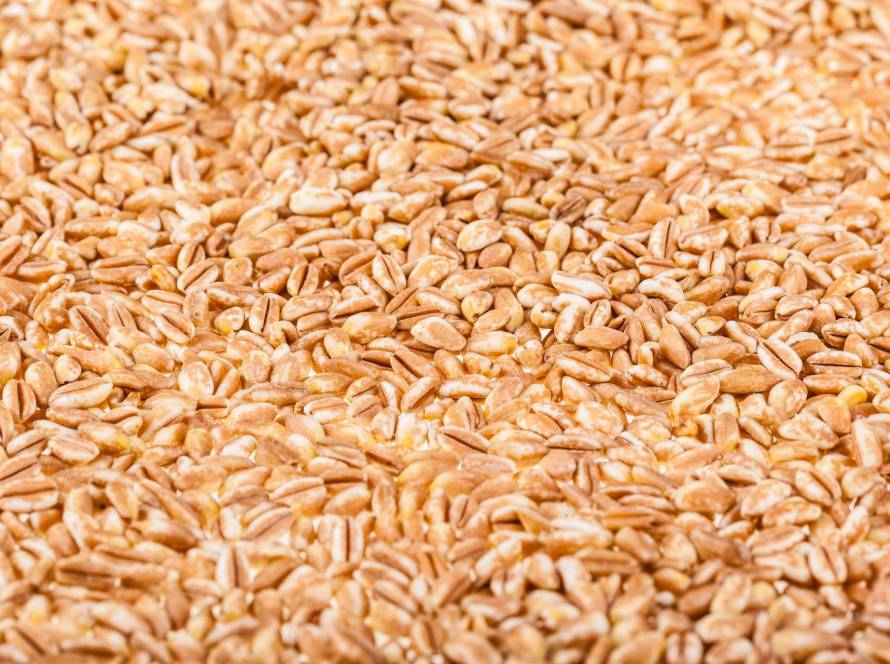Antioxidants that fight aging play a significant role to curb one of our body’s biggest health challenges: oxidative stress. The rise in chronic diseases linked to aging has become more common as the world’s population ages. Reactive oxygen species (ROS) buildup has emerged as a major factor behind cardiometabolic disorders, neurodegenerative diseases and cancer.
Research shows that bioactive compounds can reduce many aging-related risk factors. Antioxidants such as vitamins C and E can substantially decrease photodamage and enhance skin texture. Vitamin E supplementation (400 mg/day) has shown measurable effects in reducing wrinkles. Natural sources like Pistacia lentiscus L. seed oil contain molecules that can reduce cytotoxic effects associated with age related diseases. Rosa gallica extract has proven effective in preventing UVB-mediated skin wrinkle formation and collagen breakdown. This piece explores how these anti-aging supplements work in our body, which anti-aging vitamins provide the best protection and how research on antioxidants and aging is transforming our approach to longevity.
Understanding oxidative stress and aging
The biological process of aging involves complex cellular mechanisms. Oxidative damage stands out as a key contributor to age-related decline in how our bodies function.
What are free radicals and reactive oxygen species (ROS)?
Free radicals are highly reactive molecular species that have one or more unpaired electrons. This makes them unstable and ready to interact with other molecules. Reactive oxygen species (ROS) are a subset of free radicals that contain oxygen. These include both radical forms like superoxide anion (O2•−) and hydroxyl radical (•OH) and non-radical forms such as hydrogen peroxide (H2O2). Our bodies turn about 95% of consumed oxygen into water through complete reduction, but the remaining 5% creates these highly reactive ROS. ROS production happens through various mechanisms in our body. We produce them mainly during mitochondrial respiration and also from exposure to pollution, radiation and certain medications.
How oxidative stress accelerates cellular aging
Oxidative stress happens when ROS production overwhelms the body’s antioxidant defenses. This imbalance damages cellular components over time. This damage is the life-blood of the free radical theory of aging that Harman proposed in the 1950s. The theory suggests that organisms age because oxidative damage builds up in their DNA, proteins and lipids. Cells under constant oxidative stress become senescent. They develop a senescence-associated secretory phenotype (SASP) and release pro-inflammatory factors and matrix-degrading enzymes. Damaged proteins become non-functional and sometimes unrecognizable to cellular cleanup systems, which speeds up aging even more.
The role of mitochondria in age-related oxidative damage
Mitochondria are both the main producers of ROS and their primary targets. The mitochondrial electron transport chain creates superoxide instead of water when electrons “leak” from complexes I and III during oxidative phosphorylation. This makes mitochondria responsible for about 90% of all ROS produced in cells. Mitochondrial function gets worse with age, which creates more ROS. This creates a harmful “vicious cycle”.
Mitochondrial DNA (mtDNA) faces the biggest risk. It’s 10 times more likely to mutate than nuclear DNA because it sits closer to ROS production sites and has less effective repair systems. This explains why mtDNA damage increases much faster with age compared to nuclear DNA damage.
The connection between anti-aging antioxidants and this oxidative process creates opportunities to fight age related decline.
How antioxidants work to protect the body
Our bodies molecular defense systems use anti aging antioxidants as their first defense against oxidative stress. These amazing compounds protect cells from damage and help us live longer through several different ways.
Neutralizing free radicals before they cause damage
Antioxidants mainly work by neutralizing free radicals through electron donation. Free radicals are unstable and steal electrons from healthy molecules, but antioxidants can give electrons without becoming unstable. This makes free radicals harmless before they damage our cells.
Each type of antioxidant works in specific places inside cells. Lipid-soluble ones like vitamin E and CoQ10 protect cell membranes, while water-soluble ones like vitamin C work in the cell’s watery parts. These compounds work together, vitamin C helps refresh vitamin E after it fights free radicals, creating a strong defense system.
Supporting DNA repair and cellular detoxification
Antioxidants do more than just neutralize threats, they help keep DNA healthy and clean up cells. They protect DNA by catching free radicals that could cause mutations and help repair enzymes work better. Glutathione, known as the “master antioxidant,” helps remove toxins and protects cell membrane fats.
It keeps lysosomes (the cell’s cleanup crew) working well and helps proteins fold correctly in the endoplasmic reticulum. This protection extends to telomeres, those protective caps on chromosomes that get shorter as we age.
Reducing chronic inflammation and inflammaging
Oxidative stress and inflammation create a dangerous cycle in aging bodies. Free radicals can overwhelm our antioxidant defenses and trigger inflammation pathways, which leads to “inflammaging“, the ongoing, low level inflammation we see in aging. Antioxidants break this cycle by fighting oxidative stress and changing how inflammation signals work. Vitamin C blocks the nuclear factor κB/tumor necrosis factor alpha (NFκB/TNFα) pathway, a key inflammation signal system. Polyphenols help reduce inflammation and can prevent or reduce chronic age related conditions.
Anti aging antioxidant supplements protect our cells from age-related damage through all these connected mechanisms.
Key anti-aging antioxidants and their functions
Powerful allies in the fight against age related cellular damage have emerged in the form of specific antioxidant compounds. These natural substances target different aspects of aging through various biological mechanisms.
Vitamin C: collagen support and UV protection
Vitamin C keeps skin healthy by playing a vital role in collagen synthesis. It acts as a cofactor for enzymes that stabilize the collagen molecule’s tertiary structure. This powerful antioxidant fights free radicals from environmental pollutants and ultraviolet radiation in the epidermis and dermis. Research shows that people who apply vitamin C formulations daily for at least three months see improvements in fine and coarse wrinkles and better skin texture overall. On top of that, it works with vitamin E in a collaborative effort to prevent photodamage by recycling oxidized vitamin E molecules.
Vitamin E: membrane stability and lipid protection
Vitamin E’s role as a lipophilic antioxidant means it protects cell membranes from oxidative damage. It hunts down free radicals and reduces lipid peroxidation, which helps maintain membrane integrity. The precise way vitamin E positions itself within membranes lets it protect lipids by neutralizing reactive free radical species. This positioning helps stabilize membrane structure by creating complexes with potentially destabilizing molecules, which preserves the amphipathic balance within cellular structures.
Glutathione: the master antioxidant and detoxifier
Scientists call glutathione the “master antioxidant.” Healthy cells contain it mostly in its reduced form (GSH) and the GSH:GSSG ratio exceeds 10 under normal conditions. This compound efficiently fights various ROS including hydroxyl radicals and hydrogen peroxide. Glutathione does more than just act as an antioxidant, it regulates cellular processes like apoptosis, cell proliferation and protein synthesis. It also helps detoxify the body through glutathione-S-transferase enzymes that metabolize both physiological compounds and xenobiotics.
Coenzyme Q10: mitochondrial energy and heart health
CoQ10 serves two important roles: it transports energy in the mitochondrial electron transport chain and acts as a strong antioxidant throughout cell membranes. Organs that need lots of energy, like the heart, have the highest concentration. People with heart conditions can benefit from CoQ10 supplements because it increases energy efficiency in heart cells and provides antioxidant protection. Clinical trials revealed that heart failure patients taking 100 mg CoQ10 three times daily had lower cardiovascular mortality (9% vs. 16%) and reduced all-cause mortality (10% vs. 18%) compared to placebo groups.
Polyphenols: resveratrol, quercetin and longevity pathways
Natural antioxidants largest and most studied group are polyphenols. Key types include:
- Resveratrol, which comes from grape skin and red wine, activates SIRT1 pathways and might extend lifespan by regulating metabolism and stress resistance. Studies show it boosts mitochondrial biogenesis and reduces superoxide generation;
- Quercetin, found in onions, apples and berries, offers anti-inflammatory, antioxidant and heart-protective benefits. Taking more than 500 mg daily substantially reduces blood pressure according to systematic reviews of clinical trials.
These compounds work through multiple anti-aging mechanisms including senolytic effects, mitochondrial protection and autophagy induction.
Carotenoids: lutein, beta-carotene and skin/eye health
Carotenoids offer specialized protection for sensory organs. The retina and human lens, especially in the macula region essential for vision, accumulate lutein and zeaxanthin. These compounds protect photoreceptor cells from harmful blue light and oxidative damage. Beta-carotene and other carotenoids serve as vitamin A precursors. Lutein and zeaxanthin benefit skin health by blocking ultraviolet damage and may improve wrinkles’ appearance in postmenopausal women.
Antioxidant supplementation: evidence and considerations
The theoretical benefits of anti-aging antioxidants need careful evaluation of scientific evidence before we can apply them to supplement practices.
When supplements may be beneficial
Anti-aging antioxidant supplements can help specific groups of people, especially those who lack nutrients or face higher oxidative stress. People who don’t get enough antioxidants from their diet might benefit from supplements to support healthy aging.
Risks of over supplementation and pro-oxidant effects
High doses of antioxidants can backfire and create pro-oxidant effects. Smokers who take beta-carotene supplements face increased lung cancer risk. Too much vitamin E might raise prostate cancer risk, stroke occurrence and even death rates in women, according to studies. Large doses of vitamin C can lead to stomach problems like diarrhea and cramps. These side effects happen because megadoses interfere with normal cell signaling and upset the body’s natural redox balance.
Synergistic effects of combined antioxidant formulas
Some antioxidant combinations work better together than alone. Vitamin C helps restore oxidized vitamin E, which creates the quickest defense network. Studies of plant extracts reveal that specific ratios work best, ginkgo flavone and procyanidins at 1:9 ratio showed the highest synergistic DPPH radical scavenging.
Clinical trials on anti aging supplements and outcomes
Research on anti-aging supplements shows mixed results. While observational studies hint at benefits, randomized trials often show limited effects or risks. The HOPE-TOO trial with 7,030 patients found that vitamin E (400 IU) did not positively affect cardiovascular events or cancer outcomes and might increase heart failure risk. Yet targeted supplements for specific conditions show promise, especially with antioxidant formulas for sun damaged skin.
How to choose high-quality anti aging antioxidant supplements
Supplements lack FDA regulation like medications, so quality verification becomes crucial. Here’s what to look for in supplements:
- Products with independent certification;
- Stay within recommended daily allowances unless our healthcare provider suggests otherwise;
- Focus on food-based sources as our main antioxidant source;
- Talk to healthcare professionals if we take medications, since antioxidants can interact with treatments like blood thinners.
Note that whole foods with their complex antioxidant combinations usually offer safer benefits than isolated compounds.
Anti-aging antioxidants are without doubt one of our body’s most important physiological defense mechanisms against oxidative damage. This complete analysis shows how these compounds protect cellular integrity through multiple pathways. They neutralize harmful free radicals, support DNA repair mechanisms and reduce aging’s chronic inflammation. Notwithstanding that, supplementation’s relationship with actual health outcomes stays complex.
The science behind anti-aging antioxidants advances faster each day. Questions about the best supplementation protocols remain, yet these compounds’ fundamental role in cellular health stands firm. Therefore, keeping adequate antioxidant levels through diet, along with selective, evidence-based supplements when needed, offers a balanced way to utilize these powerful compounds for healthy aging.


